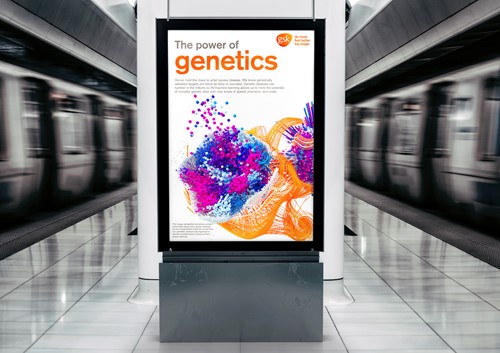
COMMUNICATE MAGAZINE’S DATACOMMS CONFERENCE EXPLORES THE BEST USE OF DATA IN COMMUNICATIONS
Communicate magazine’s inaugural DataComms conference explored the transformative power of data in everyday comms, from how it influences corporate reputation to companies’ social media and PR strategy. The conference heard from the likes of data visualisation, infographics and comms experts who analysed the best ways organisations can make use their data and the benefit it brings.
Communicate magazine’s DataComms conference explores the best use of data in communications
Communicate magazine’s inaugural DataComms conference explored the transformative power of data in everyday comms, from how it influences corporate reputation to companies’ social media and PR strategy. The conference heard from the likes of data visualisation, infographics and comms experts who analysed the best ways organisations can make use their data and the benefit it brings.
The conference highlighted that for data to be powerful it must be used and understood, which will only happen if the core principles of trust and openness are respected. According to keynote speaker Emma Thwaites, director of publishing, engagement and culture at Open Data Institute, those organisations that collect and share data of their customers and stakeholders have to create an environment of trust, put people first and clearly communicate that trustworthiness. If data is used correctly then it will bring organisations a plethora of benefits, including adding colour to narratives, drawing them closer to their audience, and helping the wider team manage crisis.
“Your mastery of data will build organisational trust, reputation and will enable you to respond quickly under pressure,” Thwaties says.
The first session of the conference – sponsored by media intelligence company Signal AI – looked at the ways data can aid corporate reputation management. Bienosa Ebite, head of group debut head of corporate comms at Centrica, highlights that although the organisation uses data today, from holding professional stakeholder audits twice a year, to conducting consumer and colleague research on a regular basis to analysing the benchmarking stats on sustainability reporting, it can do more in the future. Specifically, Centrica will focus on using data that can provide actionable insight to be implemented in the short term.
The idea would be to combine all the data sets used by Centrica, including analyst notes, key media metrics, and customer and colleague data, to listen and find out the topics their key stakeholders are discussing right now and how those can in turn can inform their comms campaign.
David Benigson, CEO at Signal AI, also stresses the importance of combining different sets of data. By blending both reputation and perception data with performance data it’s possible measure the real impact is is having on businesses, he explains.
“It’s important to have access to that data but also have the technical maturity to be able to thread the data back to other business performance metrics that matter for organisations,” he adds.
In terms of corporate reputation, data can be used both internally and externally within comms. At TSB, data was put to good use on internal social channels when it helped create of a chatbot ‘Ask Henrietta,’ which allows employees to ask any questions they want and find the information in-house. Externally, Supreet Thomas head of comms, explains, TSB has employed data to gain insight into what stakeholders and customers think and conduct detailed social media analysis, both of which allow them to create targeted comms campaign curated to specific customers and colleagues.
Another key session looked at creativity and data visualisations, and how data can be applied to construct interesting visual identities and external comms. A compelling example came from science-led global healthcare company GSK, which translated information from genome science and DNA into an image, which resulted not in functional data, but in an ownable brand asset to be used across all channels. Using data in this allowed for great flexibility with the audience.

“We were able to communicate with experts that understand genomics, as well as other people who don’t know about the matter. It was something that appealed to everyone, didn’t alienate the audience but rather brought it together, enabling to tell the story on many different levels, “says Phillippa Proctor, head of visual identity and content creation at GSK.
The session highlighted the importance of looking at data visualisation just like an organisation’s tone of voice. “Treat your data visualisation as another form of external communications, spending the time and effort to pick the right visualisation that reflects the company’s ethos,” says Caroline Beavon, freelance infographic and data visualisation designer.
Speakers from employer brand management consultancy Tonic discussed the ways in which behavioural science is changing how companies position themselves to the recruitment audience. And, data comms consultancy Boldspace’s managing director Mike Robb led a debate about where data should sit within an organisation.
DataComms closed with a case study from Jonathan Batty, head of content and storytelling at IBM, who explored the nexus between social media engagement and data. For example, with a detailed analytics programme, the IBM team realised that it was better off reducing the number of social channels. Becoming more manageable and allowing to focus in and get more targeted, drove up the social interaction and inbound mentions.
Batty closes by giving a number of tips for the social aspect of businesses, including diving deep into data to identify opportunities for engagement and re-use of existing content, avoiding to speak out but rather inserting the brand into authentic conversation, designing for each platform to avoid platform replication, and never be too big to engage with the small guys, as it’s about showing interest in all social status.
DataComms was supported by Allegory, Boldspace, the PRCA, Signal AI and Tonic. DataComms will be back, live, in November. Tickets for DataComms 2021: Corporate communications in a post-pandemic world are available here.


